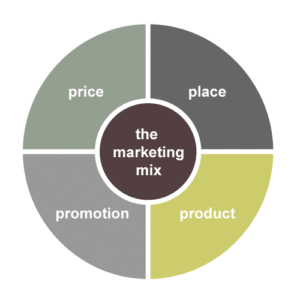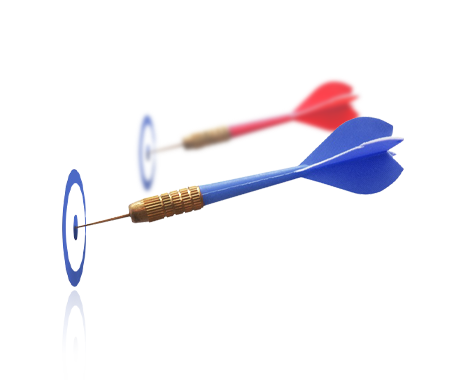Here is a possible methodology development and implementation of a digital strategy, broken down into 10 major points on which we can work during the upstream reflection phase.
These 10 points can easily be broken down as a methodology, and therefore applied chronologically, from global thinking to operational thinking.
Note: This chapter initially written in 2012 was republished in 2023, and it is the 2nd in a series of course on Management 2.0, the summary of which can be found here.
Digital strategy: a possible definition
Let us first start by defining the term “Digital strategy”. There digital strategy falls within the scope of the company's general strategy, and designates the objectives, goals, visions, organizations and governance relating to digital technologies and which are intended to maximize the company's commercial performance.
The design of a digital strategy potentially makes it possible to respond to a technological innovation, a customer need, a desire to have a better organization of the company or of course an evolution of the marketing strategy towards the web.
Several methodologies are possible for designing and implementing a digital strategy. Among them, here is mine, broken down into 10 key points. It is not necessarily perfect: we can draw inspiration from it, question it or improve it. But it has the merit of starting from the base, that is to say from the general strategy of the company, and then moving more and more towards the operational side.
1 – What is the current marketing strategy?
What is the current marketing strategy?
The answer depends on the thinking carried out upstream in order to respond to the match between supply and demand of the market in which you operate. By redefining your marketing strategy, you start from the ground up.
The marketing mix
Once you've got your head straight when it comes to the company's general marketing strategy, start getting into a little more detail by quickly describing your current marketing mix: Product, Price, Distribution and Communication.
The positioning
Are we in the strategy of cost, differentiation, or focus? Indeed, depending on the positioning we adopted when developing our overall strategy, the use of digital technologies will not be the same.
In the case of a cost strategy, we will seek to sell our products or services in bulk, hence a particular use of online advertising and a strong technological need in terms of e-commerce, logistics, etc. Example in catering with a brand seeking to make delivery volume, with prices relatively attractive, all while communicating in a very impactful and fun way on social networks.
In the case of a differentiation from above, we will seek to convey particular values through high-end and engaging graphics. To stay on the theme of catering, we would rather be on an elitist brand, with sought-after products, high prices, aimed at a chic clientele.
Finally, for the niche strategies, it will be necessary to filter online advertising and make word of mouth work, for example. Example: a grocery store based on short circuits or a concept of gluten-free cookies.
2 – What are our objectives, and how can digital help us?
Goals
Before even thinking about designing a web and mobile strategy, the first question to ask yourself is: where do we want to go? What are our medium and long term objectives? Has there been a particular technological leap that pushes us to align and change the way we operate? Is there a new market we would like to enter? Is there a distribution gap? Do we want to increase our sales thanks to the web?

So many questions which relate to the overall strategy of the company, to its very essence, and which must be answered. Only afterwards can we ask ourselves the question of the value of digital technology in achieving our objectives.
The potential impact of digital in relation to the objectives
Can Information and Communication Technologies help us achieve our goals? Are they even essential? Is there a particular sales software we need to improve our customer relationship management, and therefore benefit from better word of mouth?
Do we just want institutional support via a simple showcase site to inform our customers and partners?
Once we have answered these questions, then we can move on to the next steps, which consist of dissecting the digital strategy according to our particular needs.
3 – What is the digital communication of competitors?
 Before (or after, depending on how you operate) listing our needs, it would be wise to look at what is being done elsewhere.
Before (or after, depending on how you operate) listing our needs, it would be wise to look at what is being done elsewhere.
A competitive benchmark can give you a lot of information about what is good to do, but also what does not work.
Once the competition has been observed (in France, abroad, on Mars... be very open), you should not hesitate to look at what is being done in other sectors which have nothing to do with it, but whose ideas are potentially adaptable to your field of activity.
I refer you to the concepts of white, gray and black information taken from the field of Economic Intelligence, already mentioned in the article dedicated to cargo syndrome.
4 – What are the values that we wish to transmit (on the web)?
Depending directly on the marketing segment as well as the positioning, the choice of values to transmit is essential, because it will guide you on several things, starting with the media to use, the graphics, the type of online advertising.
5 – What kind of design?
Depending on the values to be transmitted and your target defined just before, the graphic charter designates the colors, logos, fonts and main visuals which will adorn your digital media. In this regard, I refer you to my article on the choice of colors for your visual identity.
6 – What communication media and what types of advertising?
Stemming from the values and your marketing mix (communication), the choice of digital media and the type of advertisements broadcast is essential. Website, Facebook page, Instagram, creation of Tiktok or Youtube videos, mobile application, etc. for the supports, and video advertising, display, sponsored articles, partnerships, etc. for the advertising.
7 – What level of technicality?
 It is the part of development and programming which you need. The level of technicality must be assessed in terms of SKILLS necessary and must be able to be figure.
It is the part of development and programming which you need. The level of technicality must be assessed in terms of SKILLS necessary and must be able to be figure.
Simple showcase site, or advanced collaborative space? Simple institutional communication, or large marketing operation requiring data collection and tracking? E-commerce or social network? Website or mobile application?
Remember this:
In the new Internet economy, code is king.
Ben Parr – Entrepreneur and journalist.
8 – What kinds of viral tools?
What is the viral share allocated to your digital strategy? Depending on the media used and the communications operations, the objective is to attract the maximum number of customers or prospects. Competitions bring subscribers to social networks, for example. Viral videos and images create buzz. It's up to you to have imagination, and to get people talking about you, as long as it corresponds to the image you have set in terms of communication.
9 – What budget and human resources?
What are the human resources who will be mobilized for the operational phase of the digital strategy ?
Several options are available to you: subcontracting to a web agency, freelance developers, consultants for a mission lasting several months, or insourcing through the hiring of graphic designers, programmers, integrators and of project managers. But beware of agency effects, already discussed in my article on the risks associated with outsourcing.
Finally, it will be necessary to establish a precise budget and from this, distribute it over the different phases (creation of the graphic charter, outsourcing, development of iPad applications, etc.).
10 – What means of monitoring and analysis?
During the reflection phase, it is necessary to plan the statistical tools and the human resources who will be mobilized for monitoring and incremental corrections to be made to your digital strategy, as well as for the long-term calculation of return on investment.
Conclusion
To be clear, developing a digital strategy requires a very big phase of reflection, which appeals to the very essence of the company (products and services sold, marketing target, markets, etc.), after which the development must be able to be followed, quantified and rectified according to the so-called “emerging” strategy, made up of new objectives integrated along the way.
This content was particularly close to my heart because one of the main mistakes I made during my career as an entrepreneur was to underestimate this phase of reflection and formalization, and to have rushed headlong into being convinced that the target of the projects I was leading would naturally recognize each other. However, a poorly formulated and poorly communicated project rarely makes it possible to reach its customers…
If you liked this article, or if it taught you something, don't hesitate to share it on social networks. And don’t hesitate to bounce back in the comments!






2 Responses
Good evening, Thank you for this article
Good course. Techetweb.wordpress.com